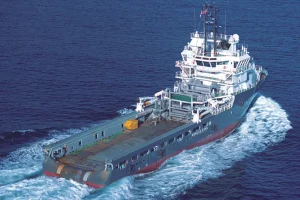- Home
- Services
Services
supplies tugs and towage services in Mumbai, West Coast and East Coast of India. With over 09 years in shipping services we have profound experience and technical knowledge specializing in harbour and coastal towage.

Towage

Assistance to Dumb Barges

Assistance and Towage of Vessels in Distress

Connecting Emergency Spares / Supplies to the Vessels.

Anchorage & Beyond Port Limit

Tug & Barge Assistance During Salvage Operations

Transportation of Heavy lift /odd /over Dimension Cargo

Services for carrying Men and Material
What We Offer
Empower your business with better logistics
A non pretium litora adipiscing velit. Felis amet per eros platea ullamcorper a.

Chartering

Marine projects

Offshore supports

Shipbuilding

Chartering
In some cases, a charterer may own cargo and employ a shipbroker to find a ship to deliver the cargo for a certain price, the freight rate. Freight rates may be on a per-ton basis over a certain route (e.g. for iron ore between Brazil and China), in Worldscale points (in case of oil tankers). Alternatively may be expressed in terms of a total sum, normally in US dollars, per day for the agreed duration of the charter. The three main types of charter are: demise charter, voyage charter, and time charter.
Marine projects
Marine project means a project to develop or improve public port or terminal facilities, and related infrastructure or capital equipment, including, but not limited to, any design, planning, acquisition, construction, reconstruction, relocation, installation, removal, repair, or rehabilitation project .


Offshore supports
OSVs are specially designed ships for the logistical servicing of offshore platforms and subsea installations, from installation through the full service life of offshore fields. Construction Support Vessels, also called Offshore Construction Vessels, have a lot of open deck area, with plenty of space for accommodations.
“Offshore” originally meant islands in the open sea belonging to a country. The term “offshore” means “off the coast”. In oil and gas extraction, “offshore” refers to the development of oil fields and natural gas deposits under the ocean.
Shipbuilding
Shipbuilding is the construction of ships and other floating vessels. It normally takes place in a specialized facility known as a shipyard. Shipbuilders, also called shipwrights, follow a specialized occupation that traces its roots to before recorded history.
Until recently, with the development of complex non-maritime technologies, a ship has often represented the most advanced structure that the society building it could produce. Some key industrial advances were developed to support shipbuilding, for instance the sawing of timbers by mechanical saws propelled by windmills in Dutch shipyards during the first half of the 17th century. The design process saw the early adoption of the logarithm (invented in 1615) to generate the curves used to produce the shape of a hull, especially when scaling up these curves accurately in the mould loft.

Logistics that is connecting you to endless possibilities
Consectetur volutpat mi libero laoreet gravida nibh feugiat mus pellentesque. Interdum eu inceptos ultrices egestas sodales iaculis. Parturient porta aptent nam sapien vel suspendisse.

